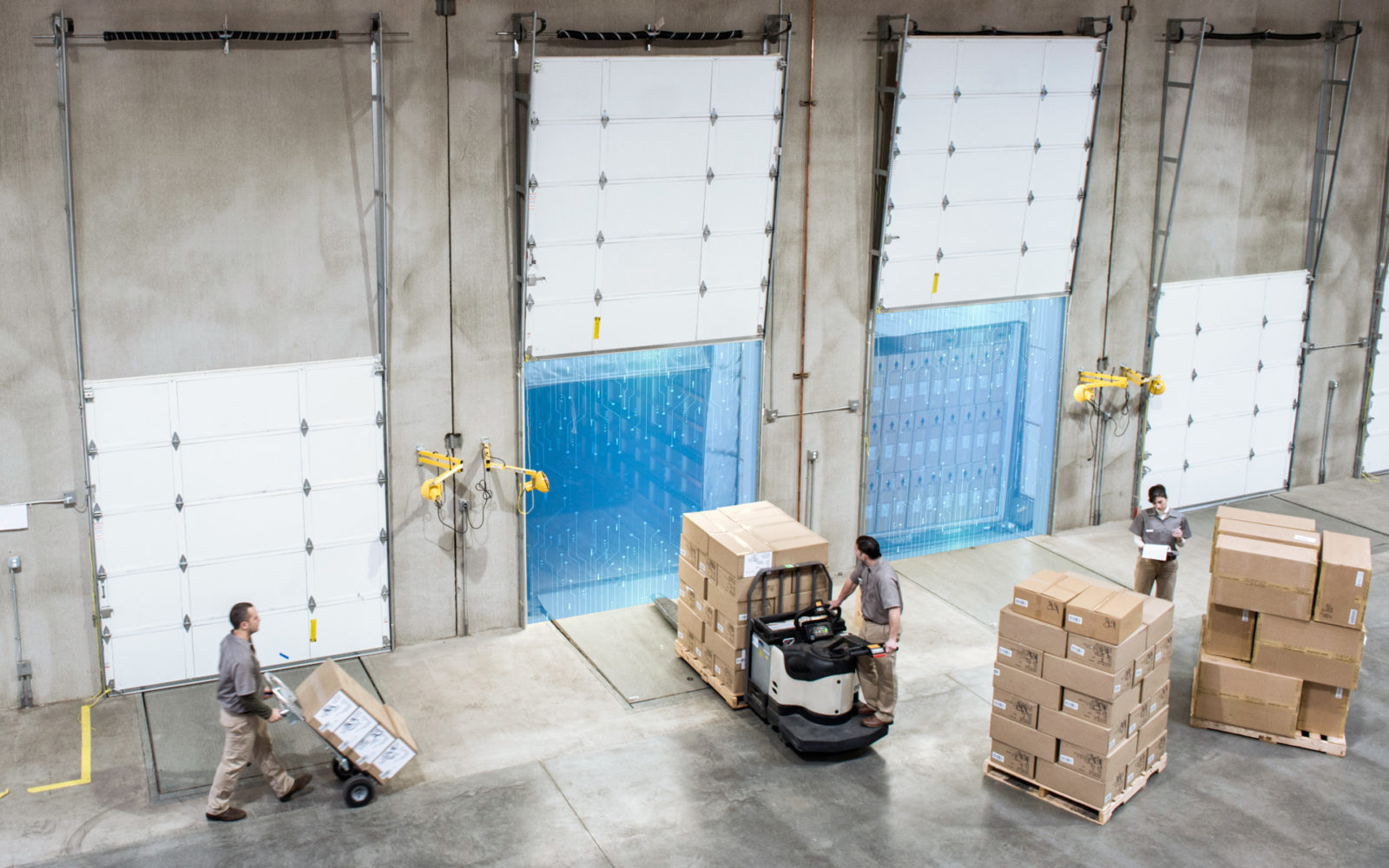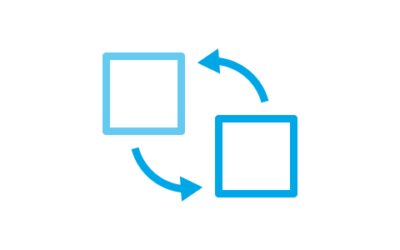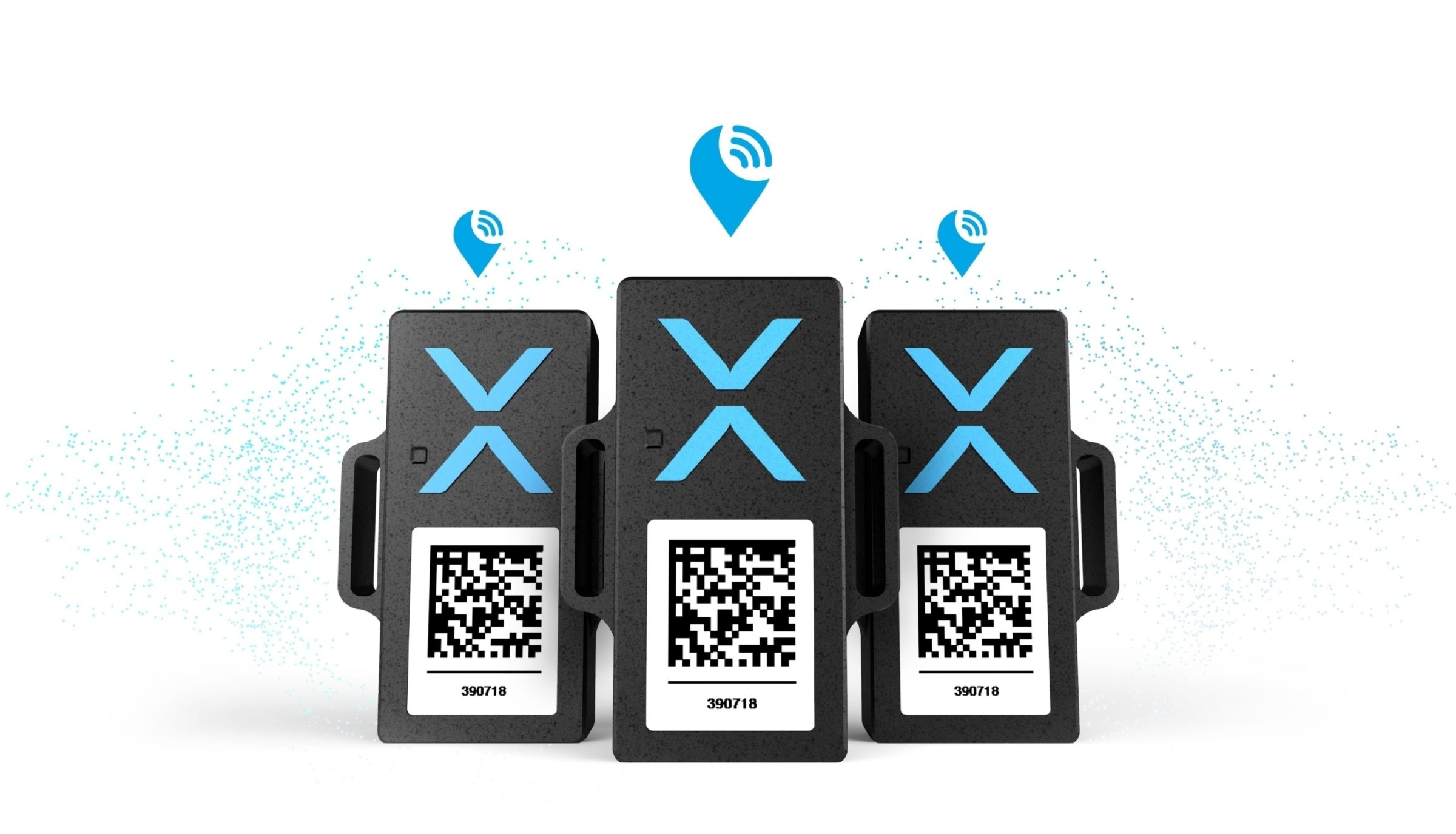
Industrial Automation Technologies
The Ultimate Benchmark: RFID vs UWB RTLS
RFID has been used for decades to generate position and identification data in industrial environments. With more and more assets, people, and AGVs navigating through shop floors and warehouses, real-time localization has become a more powerful alternative to RFID. Let’s explore how RTLS can optimize traditional RFID use cases and how the KINEXON X‑Tag, a groundbreaking innovation in UWB-technology, enables countless new industrial applications for your smart factory.
Interested in a direct cost comparison between RFID and UWB for common automation use cases?
Tech Specs: RFID & RTLS

The main difference between passive RFID and UWB RTLS is in the kind of localization data they generate: While RFID creates selective ‘point-in-time’ data, RTLS can provide continuous, uninterrupted real-time data throughout a defined space. The superior precision and flexibility of RTLS is why it is most commonly used for time- and cost-intensive use cases in production, logistics, healthcare, and beyond.

UWB RTLS: The More Powerful RFID

Data Generation
Similarly to RFID, RTLS uses tags to generate its location data. However, instead of RFID’s stationary gate system, RTLS uses an anchor network to calculate the precise, real-time position of assets and vehicles. The anchor network continuously calculates position data via locating methods such as TDoA (Time Difference of Arrival) or TWR (Two-Way Ranging) to track moving assets and vehicles in a space.

Data Communication
Another major difference to RFID is that RTLS is capable of dynamically communicating data – this supports efforts to fully digitize process data. As an example, the KINEXON ePaper Tag can send and receive process updates or warnings between shop floor and IoT software. Similarly, this feature enables further use cases like Assembly Tool Control, which increases productivity and throughput rate extensively for sectors like the automotive industry.

Flexibility
RTLS also beats RFID in terms of the flexibility offered on the shop floor. While RFID gates are statically installed, RTLS anchor networks can track assets and vehicles in an entire space. Therefore, the anchor infrastructure does not need to be re-installed when production process or assembly lines are changed. This grants maximum flexibility to the dynamic production and logistics environments.
Leveling the Playing Field: Cost-Efficient UWB Solutions
Given the increasing demand for more precise, more comprehensive, and more immediate data, companies are increasingly turning towards Real-Time Locating Systems (RTLS) to complement or substitute their RFID solutions. Within this technology shift, the new KINEXON X‑Tag kicks off a virtual revolution: As the world’s most affordable solution, it opens up unprecedented automation opportunities through UWB at a comparable price to RFID.


A Cost Comparison
Are you implementing a localization technology or upgrading your legacy systems? Download our cost comparison and see how UWB solutions compare to RFID for the most common automation use cases.
DOWNLOAD COST COMPARISON
or schedule a meeting with KINEXON.

UWB: The Gold Standard of Indoor Localization
Regarded as the Gold Standard of ultra-precise real-time localization, UWB is the most precise, reliable, and dynamic localizing technology. In contrast to other RTLS technologies like BLE or WIFi, which usually provide a tracking accuracy of 3 – 5meters, UWB offers centimeter-accurate tracking <10cm. While UWB technology used to come with a hefty price tag, the KINEXON X‑Tag levels the playing field: The world’s most cost-efficient UWB Tag makes UWB-technology a viable alternative to RFID and BLE for large numbers of assets and large-scale applications.
Leveraging Location-based Automation
RTLS Optimization for RFID Use Cases

Future-Proof Your Operations with RTLS
Making UWB-technology available at a competitive price enables unprecedented industrial use cases. From upgrading traditional Track & Trace solutions to new Paperless Production, the KINEXON X‑Tag opens up vast potentials for Location-based Automation.
Explore the X‑Tag

RFID
- Inventory Management
- Process Control
- Quality Assurance
- Theft Protection
UWB RTLS
- Precise Search & Find:
With RTLS, companies always know the location of material, load carriers, and equipment. Unproductive search times and expensive delays are a thing of the past. - Global Track & Trace:
RTLS grants full status and process transparency to monitor material flow in real-time. This includes KPIs such as exact throughput or storage times. - Real-Time Process Monitoring:
The extended real-time date makes it possible to notify the relevant stakeholders in case of process violations.
▾
- Analytics:
RTLS helps identify bottlenecks using detailed flow charts, heat maps or spaghetti diagrams. - Paperless Production:
Combining UWB RTLS and e‑Ink technology offers new possibilities for process visualization and optimization. - Material Management:
Accelerated throughput and increased productivity – location data can help automate material replenishment (e.g. eKanban) at the machine.


Smarter Data: A Platform for All Localization Technologies
While hardware is an essential component of localization, any smart solution requires powerful software to unlock the true value of location-based automation — no matter which technology is deployed for the generation of location data. This allows operators and decision-makers alike to distill comprehensive data sets and create actionable insights from the location data.
KINEXON’s Location-based Automation Platform can seamlessly integrate RFID, BLE, UWB and GPS data to control and automate nearly unlimited processes.




